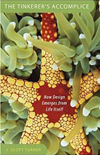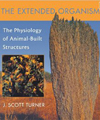J. Scott Turner: Biology’s Second Law

 |
Talk by J. Scott Turner
Moderator Conference Center – Building 3 |
Books by J. Scott Turner  |
Biology’s Second Law
Biology’s First Law is Darwinian natural selection. In its current form, Darwinian gene selectionism promises a comprehensive and coherent theory of biology and evolution. Although Biology’s First Law has come close to delivering on this promise, it has fallen short in several significant ways. It cannot offer a credible theory for the origin of life or for the evolution of life before there were genes. It cannot offer a theory of adaptation that is not tautological. It has no good answer for the phenomenon of biological design. It has no credible explanation for why living systems tend to organize into organisms or “organism-like” systems. It deals with fundamental questions like the nature and origin of intentionality by ignoring them altogether. I will argue that these gaps may be filled by turning to an idea put forth by Darwin’s French contemporary, Claude Bernard, namely the phenomenon of homeostasis. This notion, largely misunderstood and trivialized today, in fact represents a profound statement about the nature of life, with subtleties that we are only now beginning to appreciate. Just as the concept of entropy was needed for there to be a comprehensive theory of thermodynamics, homeostasis is the idea that will lead us to a fully coherent theory of biology: it is Biology’s Second Law.
J. Scott Turner has contributed to the theory of collective intelligence through his fieldwork on the South African species of termite Macrotermes michaelseni, suggesting the architectural complexity and sophistication of their mounds as an instance of his theory of the extended organism and showing the emergence of super-organismal structure.
The mound functions as an external lung for respiratory gas exchange for the colony as a whole. His prior work on the thermal capacity of incubated birds’ eggs showed that an egg with an embryo and an incubating parent function not as two separate organisms but as a coupled physiological unit. Building upon this empirical work, Turner has argued that the principle of homeostasis is a fundamental property of living systems that accounts for the phenomenon of biological design. Turner is the author of two acclaimed books: The Extended Organism: the Physiology of Animal-Built Structures (2000) and The Tinkerer’s Accomplice: How Design Emerges from Life Itself (2007), both published by Harvard University Press and reviewed in a range of journals, including Perspectives in Biology and Medicine, the New York Times Book Review, EMBO Reports, American Scientist, and Nature.
With this argument, Turner counters both Intelligent Design and strong Darwinism, showing how natural selection (Darwinism) is complemented by other factors. Turner proposes that modern evolutionary theory over-emphasizes genetic natural selection, with its tendency to separate information from catalysis at the molecular level. By connecting information and catalysis, epigenesis, coupled with homeostasis, exemplifies the internal, directive capacities of the organism, linking information and behavior. Turner cites termite mounds as an instance of collective intelligence, a form of swarm cognition that is a model for the emergence of cognitive systems in a variety of contexts, including, but not limited to, self-contained nervous systems.
The extended organism principle also justifies the Gaia Hypothesis, suggesting what we can translate from micro to macro, and that principles governing termites offer a perspective on mind. Turner is Professor of Biology at the State University of New York College of Environmental Science and Forestry (SUNY-ESF) in Syracuse, New York. Under a grant from the Templeton Foundation, he has been a visiting scholar at Cambridge University, writing his third book on “Biology’s Second Law,” which builds the case that evolution operates through the complementary principles of Darwinian natural selection (biology’s “First Law”) coupled to homeostasis (biology’s “Second Law”).
